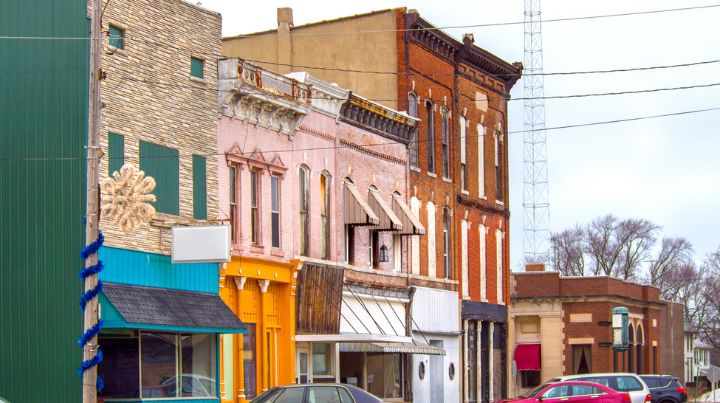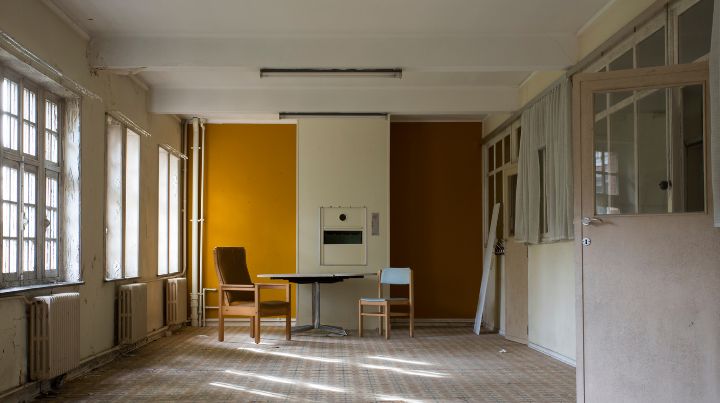Survival Cache Locations & The Short-Term Bug-Out

Social unrest is becoming more frequent everywhere, and signs indicate things will worsen. Protests, crime, rioting, and strikes can happen suddenly or in waves, leading to government crackdowns. Things like martial law, curfews, and other restrictions are real and now a possibility, potentially making the situation critical.
A small cache close to home or even in another part of town can be a low-cost, effective strategy to diversify preparations without investing in different locations. Particularly in urban centers and for those unable to relocate or struggling with lack of space, among other limitations.
It can also work as a safe place or even a springboard for evacuation in case our home or neighborhood turns unsafe (for instance, from crime, violence, or even a natural or man-made disaster). It doesn’t have to be a sophisticated bunker, much less cost a fortune. The idea is to build something easily manageable, sustainable – and discreet.
How I Built My Small Cache/Safe Place (and Tested It).
It took a few years for the worse of the 2008 financial crisis to hit Brazil, and even though I almost got devastated financially, through careful planning and some sacrifices, I recovered and even started preparing for what I saw coming next.
We’re still in the early stages of what I believe will be an even greater economic winter, which is the accompanying social developments. However, when I started building my small cache, I had no idea it would get tested in a near-SHTF much sooner than I thought.
Between 2013 and 2016, a wave of massive political protests swept Brazil. People were taking to the streets en masse almost weekly to demand the resignation of President Dilma Rousseff, disgruntled with ruinous policies and an endless string of corruption scandals that devastated the country’s economy.
In that period, I lived in an area where popular meetings traditionally take place.
During normal times, the gatherings consist primarily of musical and artistic performances open to the general public, the kind that happens all the time in big cities everywhere.
The manifestations of that period started peacefully. However, at one point, they turned into rioting and violent clashes between the protesters, inflamed by Black Blocs, agitators, and police forces. The crowds grew in number and aggressiveness in a crescendo that led to President Dilma’s impeachment in 2016.
The situation was unstable, with violence and depredation in my area.
I’d hear the mobs, the helicopters, the screaming, and the smoke bombs from my apartment. There’d be broken glass from the vandalized stores, bank agencies, and metro stations all over the sidewalk the following morning. Protestors and the police rushed through our streets.
Despite the turmoil and violence, we were not in great physical danger. Our house was mostly safe. But people got scared, and some neighbors moved out of town for weeks. My wife was nervous, and I figured taking some distance wouldn’t hurt.
We could’ve moved to my in-laws or a hotel in another part of town, but it was a perfect opportunity to test my strategy, so we moved to a small cache/safe place I’d put together years before in another part of town. We stayed there twice during that period (and once again during the worst moments of the 2018 truckers’ strike).
The idea isn’t to create a bunker or bug-out place.
It makes strategic and financial sense to optimize and implement minimal conditions for an emergency stay, but only as long as that’s something viable or reasonable. As with most things preparedness, there’s no right or wrong, only what fits our context, goals, and budget.
For instance, I have clients who rent a room with enough space for only a few water gallons, food boxes, and other small stuff. Others wanted extra space to accommodate their families and pets as well. Those living in an ultra-safe area with room to spare may not even need an external cache.
Also, conditions may vary depending on location. Here in Brazil, storage centers aren’t as common (or accessible) as in the US and elsewhere. That’s not an impediment but a factor. Many options are available in any medium or large city, some less obvious, which is a plus. It’s only a matter of looking into the alternatives, researching, and planning accordingly.
Below are the criteria I used to search and find my SCC. I also applied the same rationale when consulting for clients building their cache. Use as a guide, adapting according to your conditions and situation:
Settings
When searching for a location, keep in mind the main goal which is to diversify and create an option in case something happens with our house and resources. That means looking for different (ideally better and safer) conditions than found in your region.
Illustrating my point: I have clients who live in areas subject to flood during the summer. Others live in crime-ridden districts and some near hazardous industries. We then searched for places where those threats wouldn’t be a problem for them, their families, and their resources.
Remember that disasters can affect the infrastructure and services in a relatively large area. The cache must be a way to have immediate access to essential resources 24-7-365.
Being along the way to our working place, or any other route you might take frequently, is also beneficial, as it makes watching and keeping the site in good order and managing the resources (rotating, renewing, restocking, etc.) more manageable and convenient.
Location
I wanted something within walking distance. Most clients do, too, for obvious reasons. At certain times during the 2013-2016 turmoil, going out with the car wasn’t safe or even an option (for me, at least). Same during the 2018 truckers’ strike, when fuel started to disappear from the pumps after days only.
That may or may not be practical or possible, though. It depends on where you live, the infrastructure, the availability of places, and other factors. Flexibility and preparation can overcome shortfalls, though.
Even though my cache’s building is in the same grid (infrastructure) as my house, I can stay there OK without electricity, using the same strategies and solutions I have at home (portable solar panels, battery banks, hand-operated utensils, camping gear and so on).
Investment
As always, the financial aspect is critical. But it’s also highly personal, so it’s hard to advise. I consider it essential to keep the investment as low as possible so it’s also sustainable. Finance is one of the most critical preparations for any crisis.
I’d say “never go into debt to prepare,” but that also depends on one’s situation. There are occasions in which I’d go into debt myself if my family’s safety or survival depended on that. I’m sure you’d, too.
Overall, I try to conjugate (or justify) multiple uses to spread costs or find ways for the place to pay for itself. Creativity is vital, and there are some ways to keep a place like this profitable even. One client installed a few computers in his cache to mine crypto. Another one uses his to store part of his inventory, and so on. Be creative.
OPSEC
As always, OPSEC is a critical aspect when it comes to preparations. It must be where you can go in and out, take stuff in or out, or stay without drawing much attention. I say “much” because no one is invisible. In a city (or any place where other people exist), it’s practically impossible to be 100% grey about anything.
That’s an illusion, so the best we can hope for is what I call D+D, or discretion and distraction. Try not to fill the place immediately, be seen with loads of resources, or look odd or out of business. Be discreet (and friendly) when dealing with the personnel, and have a “decoy” story or narrative to tell around if necessary – here, too, it’s essential to be creative.
Start Small, Then Build and Adjust
It’s the best way to make it sustainable. It took me almost two years to get my cache how I wanted. I was lucky (in a way) to be able to test it early on in a real-life situation and fine tune-it further.
I rented a small office in an old, small corporate building a few blocks from my apartment. It’s inconspicuous, a bit decadent, and cheap. Unless there’s a zombie apocalypse, as we see in the movies, it’s the last place someone or a mob would break into to look for money or valuables, much less things like food and other survival resources.
The place has two small rooms, toilets (no showers), and a small pantry. It can accommodate up to five or six adults and the stuff stored there. I just painted it, installed a carpet, a few tables and chairs, an air conditioning and a small refrigerator. It looks like a small office, not a cache.
The stuff stays in cabinets: dried food, water, a hand pump, a couple of small camping stoves with extra gas cans and cookware, water treatment systems, four inflatable sleeping pads, and sleeping bags, a few pieces of clothing and some miscellaneous (toiletries, first aid kits, batteries, and flashlights/lanterns).
There are no sophisticated systems, nothing fancy. I keep some cash (in the local denomination, Euros and US dollars), copies of essential documents, and a 9mm with some ammo in a hidden safe.
It’s a small-scale copy of the stockpile I keep at home. I can stay there for a few days up to a few months without bringing a bug-out bag or anything, maybe even more if I ration the stuff.
Final Thoughts
I presented my strategy based on my situation. After 2016, the violent protests ended, and the condition improved significantly in Brazil. However, in 2018 things got sketchy when the truckers went on a national strike leading to shortages, disruptions, and some turmoil again for a short time.
After that, we had Covid-19, and now there’s again some political tension building in the air, not to mention everything else happening around the globe. Those are just a few reasons why we prepare.
As I make clear in my upcoming Home Preparedness and Bug-Out Dry-Run Exercise books, I don’t see myself having to leave my place. However, as I keep saying, the world is getting increasingly unstable, and now I admit there could be situations in which diversifying and keeping options may be a valid strategy.
Admittedly, building a dedicated space (or vehicle) for emergency storage and eventual staying isn’t for everyone. As with every diversification strategy, there are costs associated with planning, building, and maintaining a small city cache. However, depending on one’s context, it can be a lifesaver. It’s only a matter of planning and acting rationally.
Additional Resources:
- What to Do if You’re Caught in a Riot
- Event Safety for Families with Children
- 10 Best Tasers for Women | Self-Defense Stun Guns (2023)
- Fabian’s Book: The Ultimate Survival Gear Handbook
Don't Miss Out!
Join the thousands of people who rely on Mind4Survival preparedness advice by subscribing to our FREE newsletter.
- Practical preparedness information
- Zero Spam
- < 0.25% of people unsubscribe




Join Mind4Survival!
Stay informed by joining the Mind4Survival! 100% Secure! 0% Spam!
Follow Us!
Affiliate Disclosure
Mind4Survival is a free, reader-supported information resource. If you make a purchase through our link, we may, at no cost to you, receive an affiliate commission.



